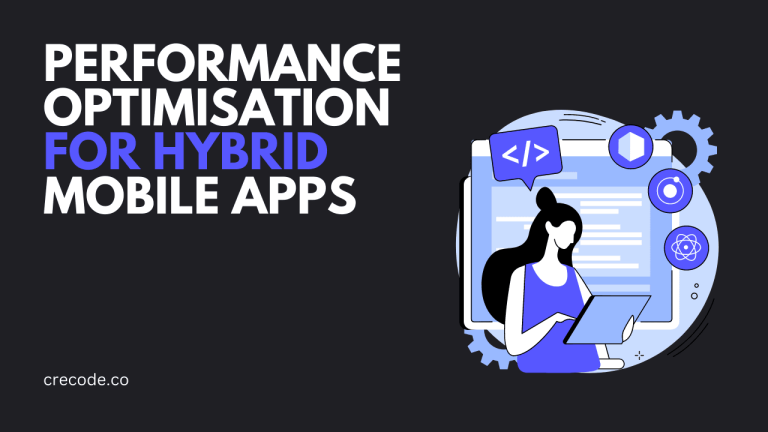- Abdullah Saleem
- July 11, 2023
Performance Optimization Techniques for Mobile Apps
In the fast-paced digital era, performance optimization of mobile apps is a crucial aspect of delivering an exceptional user experience. But how can you ensure that your app performs seamlessly across different platforms and devices? Let’s dive into some key strategies for performance optimization, broken down by app type.
Understanding Mobile App Types
Mobile apps can be classified into several types based on their functionality and purpose. Before we get into the nitty-gritty, let’s demystify what we mean by native, hybrid, and cross-platform mobile apps.
Native Mobile Apps
Native mobile apps are developed specifically for a single platform, like iOS or Android, using a platform-specific language. They provide a high degree of reliability, fast performance, and a better user experience.

Hybrid Mobile Apps
Hybrid mobile apps combine the elements of both native and web applications. They are built using HTML, CSS, and JavaScript and are wrapped in a native container.
Cross-platform Mobile Apps
Cross-platform mobile apps are, as the name suggests, compatible with multiple platforms. They are written in a single language, which could be React Native, Xamarin, or Flutter, and are compiled into native code that runs on different platforms.
Performance Optimization for Native Mobile Apps

Code Optimization
To maximize the performance of a native mobile app, code optimization is crucial. By keeping your codebase clean, removing unused code, and refactoring regularly, you can significantly improve your app’s performance.
Image Optimization
Images can take up a significant amount of memory in your app. Compressing images and using appropriate file types can reduce the load and speed up your app.
Memory Management
Proper memory management can greatly enhance your app’s performance. Release unused objects, avoid memory leaks, and use caching wisely to optimize memory usage.
Performance Optimization for Hybrid Mobile Apps

Minimizing the Use of Libraries
While libraries can provide a lot of functionality, they can also slow down your app. Therefore, it’s crucial to only use the necessary libraries and to keep them updated.
Use of Hardware Acceleration
Hardware acceleration allows your app to take full advantage of the underlying hardware for complex computing tasks, which can greatly improve performance.
Efficient Use of WebViews
Hybrid apps often use WebViews for displaying web content. It’s important to use them efficiently and keep their number to a minimum to ensure optimal performance.
Performance Optimization for Cross-Platform Mobile Apps

Selecting the Right Framework
Choosing the right cross-platform framework is key to performance optimization. Each has its strengths and weaknesses, so it’s important to choose one that suits your specific requirements.
Leveraging Native Modules
Native modules can help you access device capabilities, providing a smoother, faster experience for the user.
Prioritizing App Components
Prioritize the loading of essential components to ensure that your app loads quickly and provides immediate feedback to the user.
Conclusion
Performance optimization is not a one-size-fits-all process. It requires a clear understanding of your app, the platforms it will be on, and the expectations of your users. With the techniques discussed, you can provide your users with a faster, smoother, and overall better app experience.
FAQs
A native mobile app is an application developed specifically for a single platform, like iOS or Android, using a platform-specific language.
Code optimization helps streamline the application by reducing redundancy, removing unused code, and improving readability and maintainability, which in turn enhances the app's performance.
Hardware acceleration allows hybrid apps to delegate complex computational tasks to the device's hardware, resulting in improved app performance.
Different frameworks have different strengths and weaknesses. By choosing the right framework, developers can take advantage of its strengths and avoid its weaknesses, resulting in an optimized app.
Prioritizing the loading of essential components ensures that users can start interacting with the app as soon as possible, leading to a perception of faster loading times and better performance.